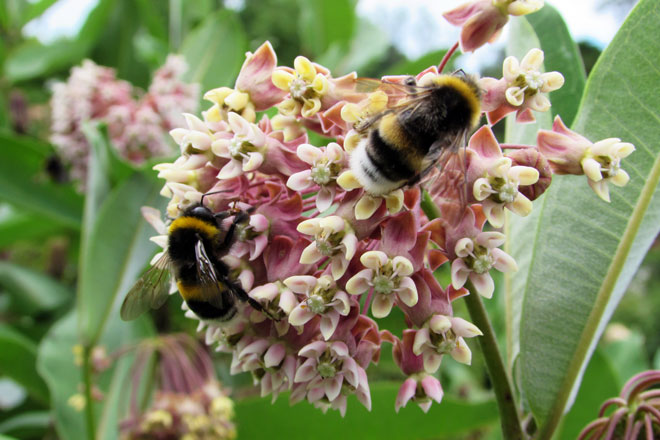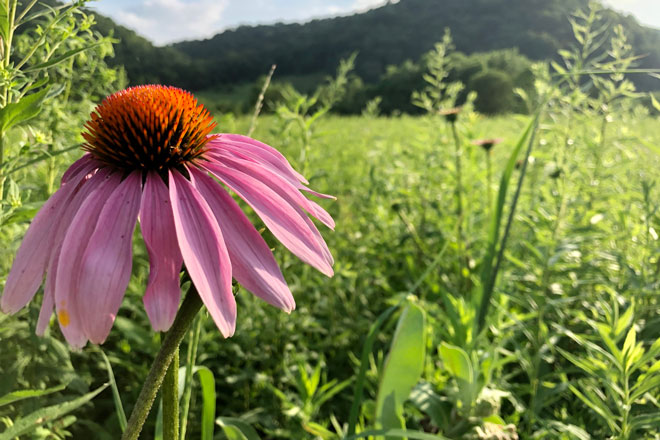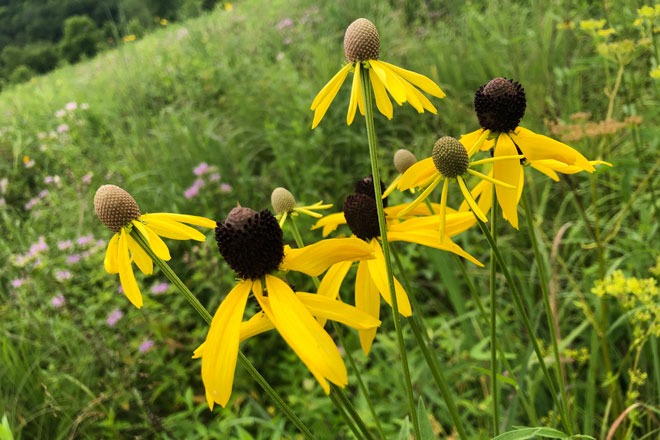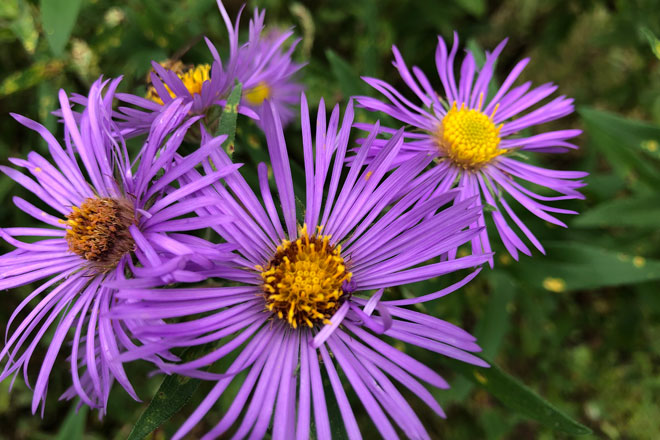By Tom Carpenter
Pollinator Week builds awareness for and butterflies and bees and blooms … and everything that pollinator habitat does for upland birds.
“The times, they are a-changin’” – Bob Dylan
You can’t beat yourself up for what you didn’t know at the time. And besides: A kid’s gotta make a living.
I killed a lot of milkweed in my day.
As a smalltown boy in an agricultural community, farmers were the main source of employment for a young teen. Working summer’s hay harvests was perhaps the most common job. When I was a little older and could drive, milking cows when a farmer needed a night or weekend off was the most financially rewarding.
 Bees like milkweed too
Bees like milkweed too
Then there was cutting milkweed. In those days, which were not that long after Dylan penned perhaps his most famous ballad about the changin’ times, milkweed was an enemy to a farmer’s new grainfield, the plants’ broad leaves shading out the corn or bean plants. Or at least that was the perception.
Armed with a spade and paid by the hour, that’s what happened about the time of year of what is now Pollinator Week (this year June 20-26).
The spade made a simple sound. Swip. Swip Swip. And down tumbled every milkweed plant.
 Purple Coneflower
Purple Coneflower
I suppose in the big scheme of things, I wasn’t putting that much of a hurt on the world’s butterfly and bee populations. But still, we all look back with a few regrets.
The times, they are a-changin’. Or maybe they already have.
Today, out on my small but impactful pollinator mini-prairie, I relish milkweed. I make sure to leave some bare spots on the soil for the tiny floating seeds to land and catch and grow next year. These little wild invaders get special care and attention. What treasures they are when I spy them sprouting in spring. What magic they attract in the form of wafting monarch butterflies come bloom time.
I have even been known to mow around milkweed plants that grow into the yard.
 Yellow Coneflower
Yellow Coneflower
But milkweed is just one component of the flowering habitat that helps pollinators … and serves as critical nesting and brood-rearing habitat for pheasants and quail. Coneflowers (my favorite, with the trailing petals of the yellow stars in particular making my heart ache). Beebalm (Monarda). Butterflyweed. Vervain. Leadplant. Anise hyssop. Ironweed. Joe Pye (sort of a monster but oh so attractive to bees and butterflies). And asters, late-season saviors for migrating monarchs and final bees of fall.
Farmers don’t have to hate milkweed today. It is largely kept in check to places it should be.
But there needs to be more of those kinds of places on the landscape. That’s what Pollinator Week is week is all about. Get involved. Every plant matters – one milkweed on the edge of a yard, or a hundred thousand forbs (I still call them wildflowers) in a plot of improved prairie ground that you are going to hunt this fall.
 Fall Asters
Fall Asters
I’ll never make up for all the milkweed plants I whacked.
On second thought, if I keep on trying, maybe I will.
Tom Carpenter is editor at Pheasants Forever. Every year his yard loses more bluegrass and gains more milkweed and other wildflowers.
Do your part in helping provide quality habitat wherever you are by donating to put more habitat on the landscape and in your own yard!
For a limited time, a $35 donation made through this special offer includes a pollinator habitat planting kit specifically curated for your area and a FREE membership that includes a limited edition Public Land Tees Pollinator T-Shirt & Sticker!
Find additional content and learn more about Pollinator Week at pheasantsforever.org/pollinatorweek.